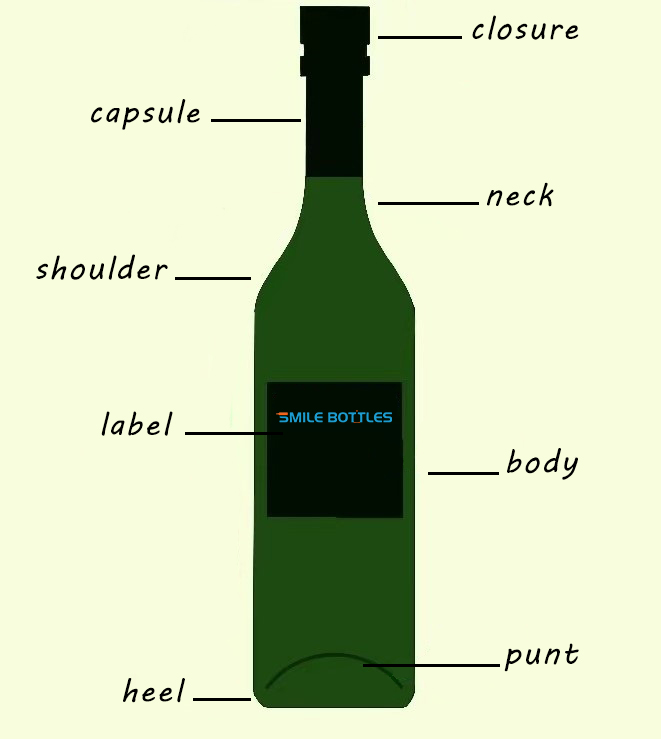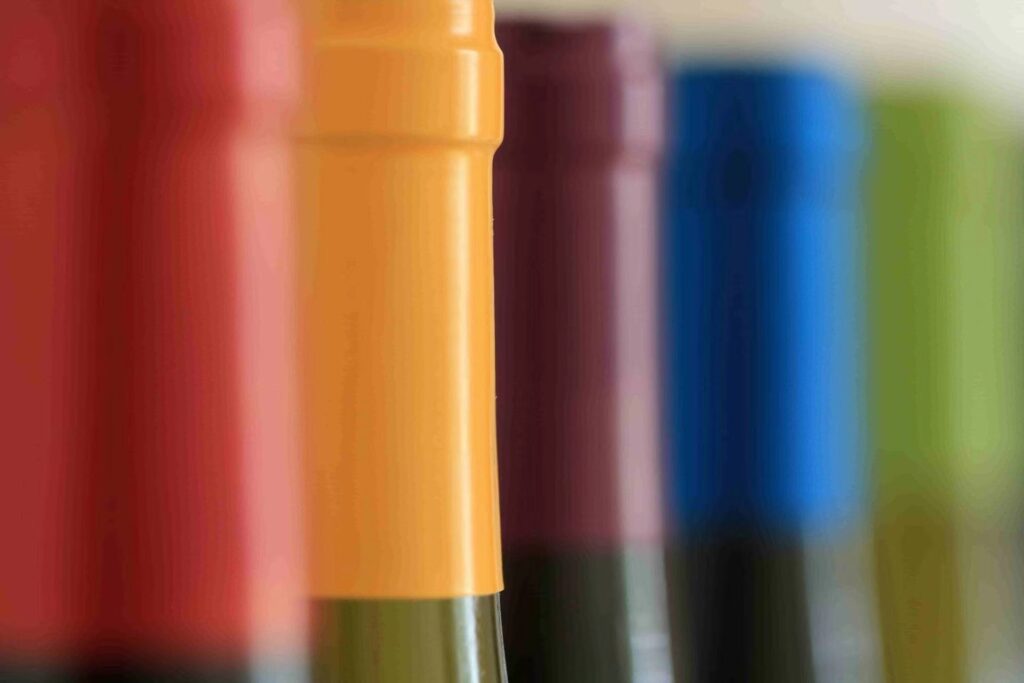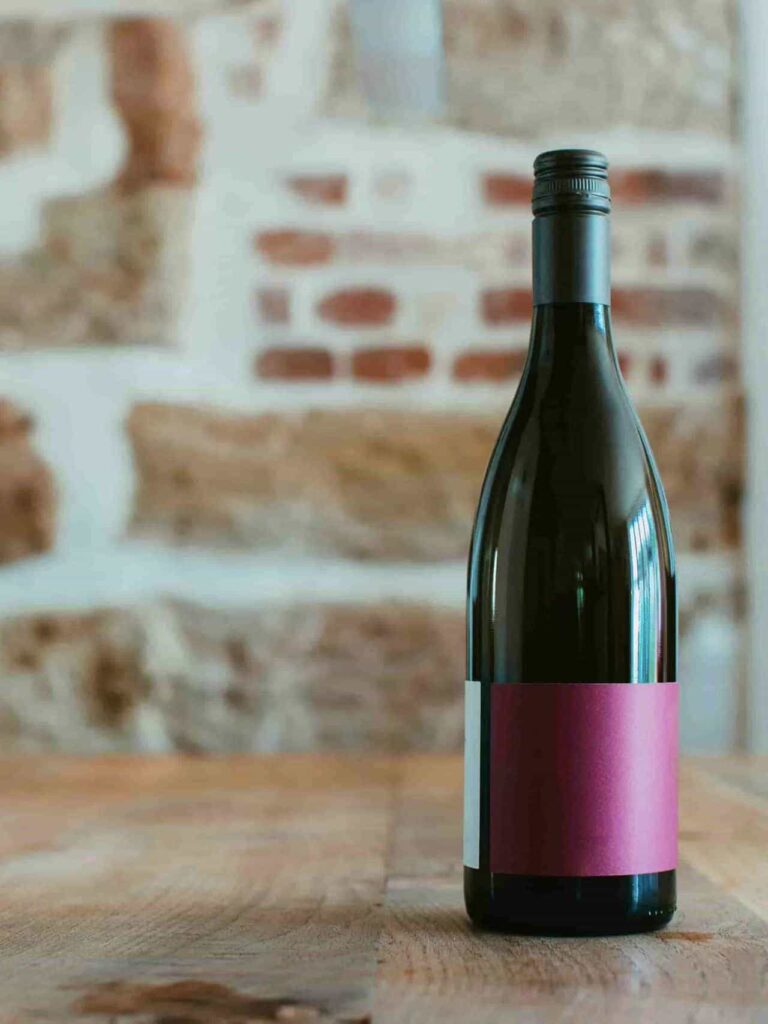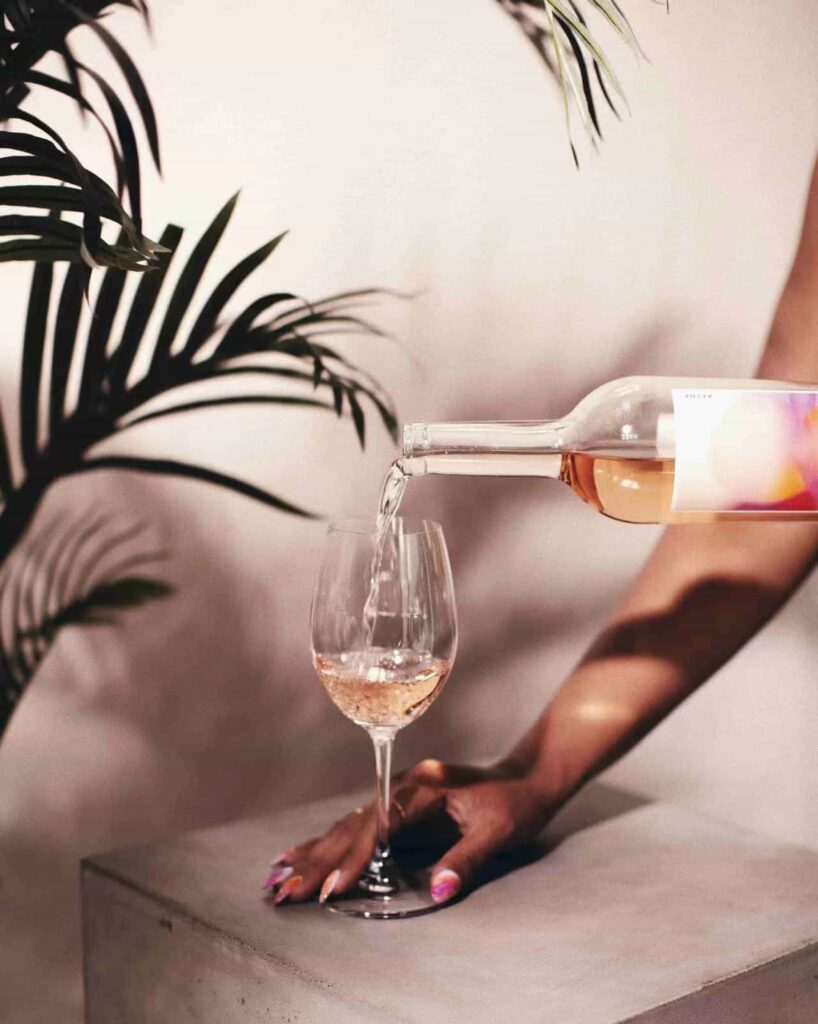When you savor a glass of red wine, have you ever pondered the intricacies of the bottle? Are you aware that each part of a wine bottle has its name? While many people may overlook these details, for wine brands, every detail counts. The design of a wine bottle is not just a matter of aesthetics. Each segment serves a distinct purpose and conveys a specific message. Understanding the names and roles of these parts is key to appreciating the thought and craftsmanship that goes into wine packaging. Let’s explore the various sections of a wine bottle and unravel the story behind each one!

Table of Contents
ToggleClosure
At the very top of the bottle, we find the closure – a critical component that seals the wine inside, maintaining its quality. The type of closure used, whether it’s a traditional cork or a modern screw cap, can significantly influence the wine’s aging process and, consequently, its taste. Closures are not just functional. They are also part of the brand’s identity. A well-chosen closure speaks volumes about the wine’s quality and the brand’s image.
○ Corks: Traditional and associated with high-quality wines. They allow for a small amount of oxygen exchange, which is crucial for the aging process of certain wines.
○ Screw Caps: Increasingly popular for their convenience and ability to prevent cork taint. They are ideal for wines meant to be consumed young.
○ Synthetic Corks: A middle ground, offering the aesthetic of traditional corks with the practicality of screw caps.
Capsule
Just over the closure sits the capsule, an often-overlooked but crucial part of the wine bottle. Traditionally made of tin or aluminum, capsules serve the practical purpose of protecting the closure from dust and tampering. In modern branding, they offer an additional surface for wineries to express their identity, often bearing the brand’s logo or signature color. For wine brands, this is an opportunity to reinforce brand recognition and assure customers of the product’s authenticity.

Neck
The neck of the bottle is more than just a passage for wine. It plays a crucial role in the pouring experience. Its design can influence the flow and aeration of the wine as it’s poured into a glass. Sometimes, the neck also carries a small label – known as the neck label – which can include additional branding or information about the wine. This part of the bottle, though slender, is an essential consideration for wine brands focusing on customer experience.
Shoulder
Moving down, the shoulder of the bottle can vary significantly in shape, depending on the bottle type. In Bordeaux bottles, the shoulders are high and pronounced, helping to trap sediment in aged wines. Burgundy bottles feature gently sloping shoulders, lending a more elegant profile. The shape of the shoulder not only contributes to the overall aesthetics of the bottle but also hints at the type of wine inside, playing into the expectations and perceptions of consumers.
Body
The body of the bottle is the most prominent part and serves as the primary canvas for branding. It’s here that the main label – which provides vital information like the wine’s name, origin, and varietal – is placed. The body’s size and shape can vary, but it’s always designed to be both functional for storage and handling, and aesthetically pleasing to attract consumers. The body’s design is a critical aspect for wine brands, as it influences both the visual appeal and the practicality of the bottle.
Label
The label on a wine bottle conveys the brand’s identity, the wine’s story, and essential information like the grape variety, vintage, and alcohol content. A well-designed label can capture the consumer’s attention and communicate the quality and character of the wine inside. For wine brands, the label is a powerful marketing tool that can differentiate their product in a competitive market.

Heel
The heel, or the bottom edge of the bottle, may seem inconsequential but it plays a vital role in the bottle’s stability. A well-designed heel ensures that the bottle stands upright and is stable on various surfaces. This is particularly important in retail settings, where bottles need to be both visually appealing and secure on shelves.
Punt
Finally, the punt, the indentation at the bottom of many wine bottles, has both historical and functional significance. Traditionally, it was a result of the glassblowing process, but today, it’s often used to control the pressure for sparkling wines and to help catch sediment in still wines. The depth of the punt can vary and is sometimes used by wine brands as a subtle indicator of quality or as a distinctive design element.

Learning the various parts of a glass wine bottle is quite important for wine brands. Each component, from the closure to the punt, plays a specific role in the wine’s preservation, presentation, and branding. By appreciating these details, wine professionals can make informed decisions that enhance the consumer’s experience and reinforce the brand’s identity.
The perfect wine bottle is a harmony of form and function, designed to protect the wine and tell its unique story!










